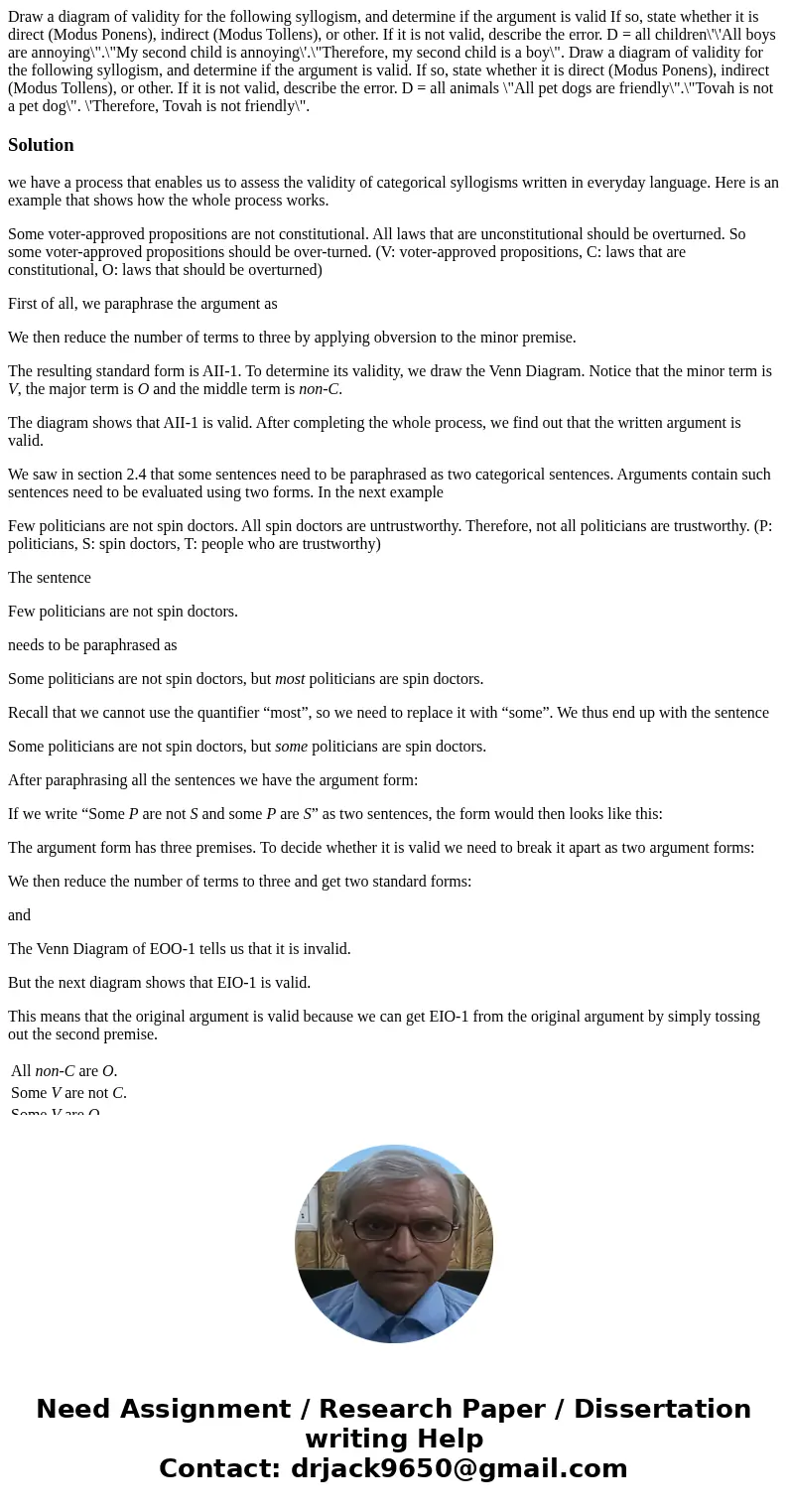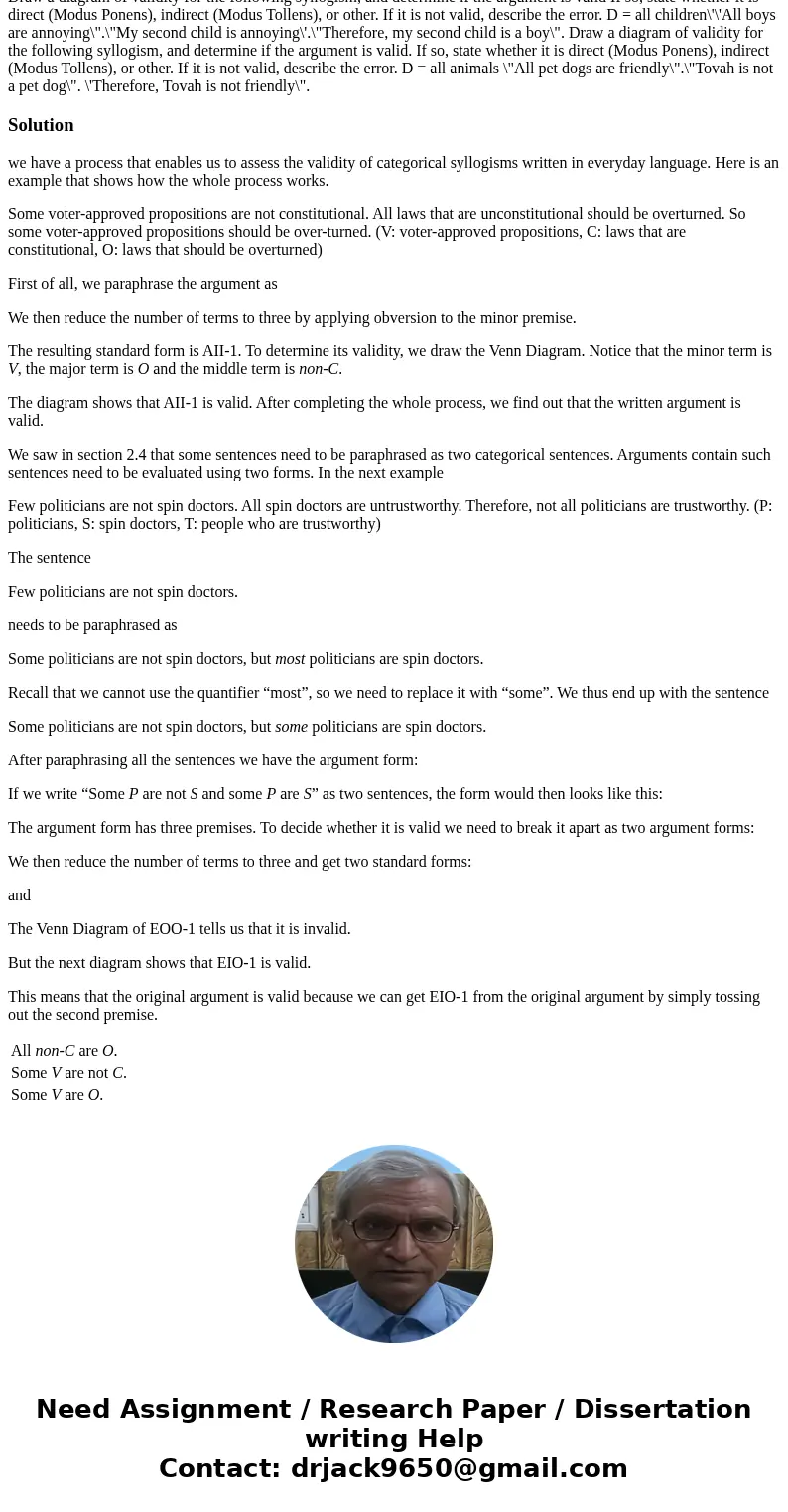Draw a diagram of validity for the following syllogism and d
Solution
we have a process that enables us to assess the validity of categorical syllogisms written in everyday language. Here is an example that shows how the whole process works.
Some voter-approved propositions are not constitutional. All laws that are unconstitutional should be overturned. So some voter-approved propositions should be over-turned. (V: voter-approved propositions, C: laws that are constitutional, O: laws that should be overturned)
First of all, we paraphrase the argument as
We then reduce the number of terms to three by applying obversion to the minor premise.
The resulting standard form is AII-1. To determine its validity, we draw the Venn Diagram. Notice that the minor term is V, the major term is O and the middle term is non-C.
The diagram shows that AII-1 is valid. After completing the whole process, we find out that the written argument is valid.
We saw in section 2.4 that some sentences need to be paraphrased as two categorical sentences. Arguments contain such sentences need to be evaluated using two forms. In the next example
Few politicians are not spin doctors. All spin doctors are untrustworthy. Therefore, not all politicians are trustworthy. (P: politicians, S: spin doctors, T: people who are trustworthy)
The sentence
Few politicians are not spin doctors.
needs to be paraphrased as
Some politicians are not spin doctors, but most politicians are spin doctors.
Recall that we cannot use the quantifier “most”, so we need to replace it with “some”. We thus end up with the sentence
Some politicians are not spin doctors, but some politicians are spin doctors.
After paraphrasing all the sentences we have the argument form:
If we write “Some P are not S and some P are S” as two sentences, the form would then looks like this:
The argument form has three premises. To decide whether it is valid we need to break it apart as two argument forms:
We then reduce the number of terms to three and get two standard forms:
and
The Venn Diagram of EOO-1 tells us that it is invalid.
But the next diagram shows that EIO-1 is valid.
This means that the original argument is valid because we can get EIO-1 from the original argument by simply tossing out the second premise.
| All non-C are O. |
| Some V are not C. |
| Some V are O. |


 Homework Sourse
Homework Sourse